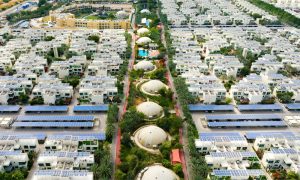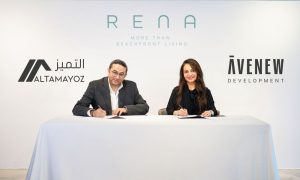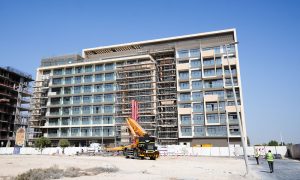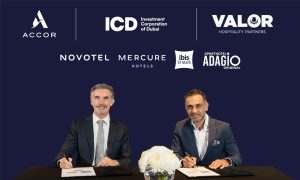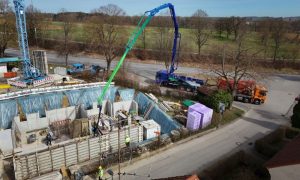Getting serious about sustainability
Jason Saundalkar speaks to KEO’s sustainability team about achieving Net Zero in the built environment, the benefits the firm has observed as a result of its sustainability strategies, the potential impact of COP28, and what governments need to roll out to usher in a Net Zero future

It’s a well-known fact that the built-environment is responsible for 40% of all annual global greenhouse gas emissions (GHGe). Breaking that figure down, building operations are responsible for 27% annually, while building and infrastructure materials and construction (embodied carbon) are responsible for an additional 13%.
In addition, according to the IEA Energy Technology Perspectives 2020 report, by 2040 approximately 2/3 of the global building stock will be structures that exist today. This means without action to decarbonise existing stock across the globe, these buildings will still be emitting CO2 emissions in 2040, which will negatively influence countries’ chances of achieving the Paris Agreement’s goal of limiting the rise in global temperature to 1.5-degrees Celsius compared to pre-industrial levels.
Over the last few years, the built environment has taken steps to decarbonise and awareness about the need to limit GHGe across the sector is continuing to grow. KEO has, over the past several years, taken major steps to decarbonise with regards to its projects and has a fully-fledged Net Zero strategy in place.
Asked to outline key points of the strategy pertaining to buildings and infrastructure, KEO’s sustainability team notes, “The industry faces both opportunities and challenges in its quest for a Net Zero carbon future by 2050. At KEO our approach starts with proactive communication with our clients and stakeholders to fully understand their decarbonisation plans and pathways. Collaboration and thorough discussion are important elements, given the paradigm shift needed to deliver projects which achieve long-term sustainability targets.”
“Drawing upon our extensive experience, KEO has developed numerous Net Zero strategies, enabling us to identify common steps that can be customised to align with the unique purpose and requirements of each project. We focus on understanding how the real estate or infrastructure asset needs to operate to achieve maximum efficiency during their operation and full lifespan. We then focus on maximising efficiency in design and construction using our comprehensive understanding of the entire process and utilising the latest digital technology platforms.”
KEO’s experts say that the firm leverages proprietary digital tools such as iCRBN and GreenPort for assessing city-wide strategies and measuring on-site emissions and the environmental aspects of projects respectively.
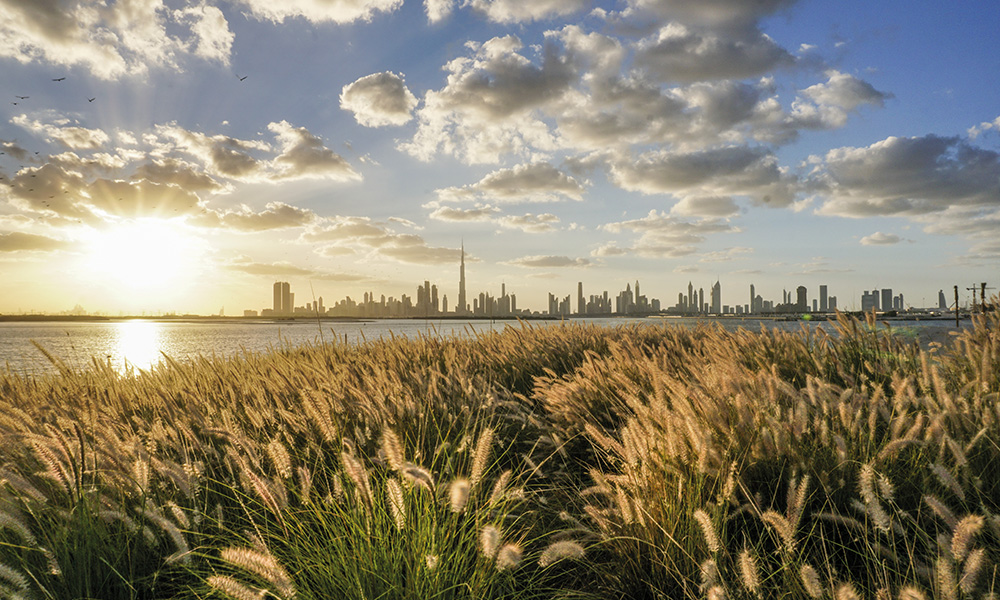
“We focus on shifting to lower-energy consumption solutions and encouraging the adoption of electric vehicles as an additional consideration. By incorporating smart technologies, monitoring systems, and renewable energy sources, we can further reduce energy demand. We carefully consider materials with a low embodied carbon impact aiming to minimise the environmental footprint of our projects,” the team explains.
Discussing where opportunities lie and highlighting positive results the firm has tracked as a result of its strategy and techniques, the team comments, “The pursuit of Net Zero carbon in real estate and infrastructure projects presents numerous opportunities for positive change across various design dimensions, as teams work collectively to increase efficiencies and drive impactful transformations. Positive results include reduced project life cycle costs, reduced energy costs and increased carbon savings. In many new projects, we have provided strategies towards decarbonisation, which have resulted in projected energy and carbon reduction of 35% to 55%, compared to similar conventional buildings of a similar budget.”
“For more advanced Net Zero interventions, we have developed ‘blueprints’ with the net energy reduction being equal to 85% – 100%. By optimising solutions, we also see improved indoor air quality, and other enhancements in quality of life,” KEO’s sustainability experts point out.
“Consideration of compact and human-centred designs can create environmentally friendly cities with an overall low footprint. Remodelling and retrofitting existing assets – especially those that are considered ‘stranded assets’ – can be a cost-effective way to reduce carbon emissions and increase the valuation of the asset. The shift towards low embodied carbon materials and lower energy consumption construction practices can benefit the environmental conditions of the wider industry.”
Outlining the roadblocks that they see with regards to achieving Net Zero across buildings and infrastructure, KEO’s sustainability team explains, “In many cases, projects’ budgets limit the willingness for decarbonisation, however, we are seeing green financing becoming more readily available for LEED Gold and LEED Platinum new builds. As a LEED Proven Provider for the BD+C rating system family, KEO has the experience to deliver such buildings. Similarly, for infrastructure projects under ENVISION and BRE Infrastructure certifications.”
The team outlines that there are several technical approaches that can be employed today; comprehensive operational modelling at the start of the concept design stages can play a crucial role in identifying areas of improvement in both infrastructure and buildings.

“Through KEO workflows and by using integrated design solutions, we find opportunities to optimise a building’s electromechanical systems and infrastructure operational requirements and regimes. We recognise the value of BIM, in enabling accurate modelling of spaces and environments, which helps in accurate performance simulations, ensuring that infrastructure projects and new and retrofitted buildings have optimised operational strategies, processes, and spaces. With the move towards Digital Twins, we can now access live data from operational sensors to enable real-time issue identification and an almost automatic optimisation of energy performance. Finally, we have noticed that sharing best practices and case studies can be a catalyst for driving innovation and inspiring clients to pursue low emissions, high positive impact projects,” says the team.
Coming Together as a Sector
While built environment stakeholders have taken steps to decarbonise and achieve Net Zero, global events such as COP28 could potentially rally efforts across the sector.
Sharing expectations in terms of the impact COP28 may have on the built environment, KEO’s experts state, “COP28 can have a profound impact on the built environment in the UAE and the wider region. We look forward to seeing international cooperation, and further commitments of nations to more ambitious targets, with specific policies, and strategies for achieving Net Zero carbon emissions goals.”
“We also want to see the adoption of significant policy decisions, providing frameworks for policymakers and developers to implement measures promoting sustainable buildings and infrastructure. It will also be interesting to see how COP28 can scale up financing for sustainable projects, supporting new and existing cities, developers, and suppliers to implement more impactful measures, promoting better lifestyles, and having a Net Zero-carbon supply chain, the latter at least within the medium to long term period. COP28 has great potential to provide significant progress in comparison to COP26 and COP27 by supporting further advancements in sustainable projects through collaboration, the push of technological innovation, and wider public involvement and engagement.”
While much has been done to decarbonise the built environment, there are still critical issues that the sector must urgently address. In fact, the team notes that construction stakeholders should come together around two main issues: the integration of technical expertise and innovative financing mechanisms. They add that KEO is well-equipped to provide support in both areas.
“Collaboration is essential in orchestrating efforts among parties such as consultants, architects and engineers, contractors and developers, especially when the focus is on technical delivery and the achievement of highly rated projects under LEED or ENVISION and BRE Infrastructure certifications. We are actively engaged in delivering such projects, and we have developed a clear and effective approach to achieve these goals. By adopting a collaborative approach, sustainable solutions can be comprehensively integrated into every stage of a project, from its inception to financing and actual delivery. KEO has successfully utilised Integrated Design Process (IDP) principles in highly sustainable projects, achieving a high success rate.”
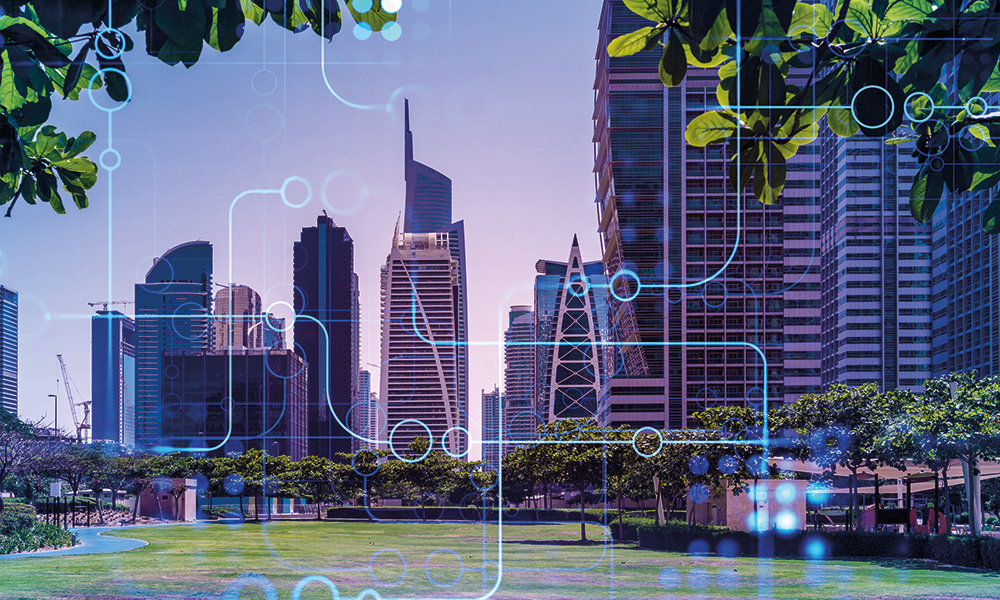
“Additionally, we have witnessed the emergence in the market of specialised financial instruments aimed at supporting sustainable initiatives. These include green bonds, high-ranked sustainability certification linked loans, corporate sustainable financing, and some impact investment funds. However, accessing financing instruments typically adds an additional level of environmental, social, and governance (ESG) due diligence, which is relatively new to the Middle East construction sector. KEO is currently supporting its clients in aligning with international financing institution requirements such as the International Finance Corporation Performance Standards and Equator Principles, readying them for future investment should the opportunity arise.”
KEO’s sustainability team says, “By combining technical proficiency and financial needs compliance in early project discussions, the widespread adoption of Net Zero carbon projects can be facilitated, expediting the transition toward long-term sustainability targets.”
The built environment comprises complex supply chains, which are essential to delivering buildings and infrastructure and, as a result, it’s critical that they also decarbonise and join in the pursuit for Net Zero. In this respect, there are several challenges including the reduction of embodied carbon emissions of concrete.
“Key challenges include finding low-carbon alternatives, optimising transportation and logistics from manufacturing facilities to projects, adopting energy efficiency practices during manufacturing and construction, promoting circular economy principles by implementing effective waste management systems, fostering collaboration among the supply chain, and addressing cost disparities for sustainable options,” remarks the team.
Here, key built environment stakeholders, including government, developers, consultants and contractors, can play a part in influencing the supply chain to adopt sustainable principles, in support of a Net Zero future.
The team adds, “Clients and contractors can support the supply chain by setting clearer targets, prioritising sustainable procurement, sharing knowledge, evaluating, and selecting the supply chain based on sustainability criteria among technical and financial, and monitoring the supply chain performance. Establishing long-term partnerships can also help a lot.”

“Designers and consultants can drive change by specifying low-carbon systems and materials and focusing their delivery on sustainable practices in project requirements and specifications. Clients, contractors, consultants, and regulators, all together, can create market demand, foster innovation, and hold the supply chain accountable to its merits. By working in tandem, all of us can pull the supply chain towards contributing to a more sustainable built environment and supporting infrastructure.”
Government Influence
Countries across the Middle East have launched initiatives that align with the Paris Agreements, and are taking active steps to decarbonise and achieve Net Zero. Several have even unveiled ambitious Net Zero targets including the UAE, which as part of its UAE Net Zero 2050 initiative, aims to be the first country in the MENA region to achieve Net Zero by 2050. Across the world, legislation in support of Net Zero is being rolled out and KEO’s team believes that this is critical to driving tangible change.
“Government legislation can play a key role in driving decarbonisation efforts in both the built environment and infrastructure. But, by government legislation, we don’t mean taxation. Countries such as the USA, UK, Japan, Singapore, and the European Union, have implemented notable measures for moving forward with sustainability and decarbonisation.”
Asked to share their thoughts on what the built environment requires from governments to drive greater Net Zero action, the team responds, “Governments must establish a comprehensive set of policies that include even clearer, and more ambitious, targets for carbon reduction. Such policies may include the development of carbon emissions limits for various industries and the data on the carbon intensity of the power grid on an annual basis. It means also setting continually increasing energy efficiency standards for all industries in predefined times during the next twenty years.”
“There is also a need for local industries to advance on decarbonisation and the government can push forward new technologies, while industrialists can reduce costs due to scalability; another opportunity could be the allocation of funds for R&D in the built environment and infrastructure sectors.”
The sustainability team continues, “As taxation may not be the right way forward, streamlining green permitting and regulatory processes is important to increase the number of sustainable projects. Other focus areas that we have seen significant progress on in the UAE during the last months are the improvement of knowledge-sharing, industry collaboration and capacity building.”

Technology could also have a significant impact on the built environment with regards to its quest to usher in a Net Zero future. BIM has already significantly enhanced the delivery of projects, however new systems and technology could have a pronounced impact with regards to the delivery and operation of assets.
Discussing technology and its potential impact on sustainability, KEO’s experts say, “Artificial intelligence (AI) can help to identify inefficiencies and support to suggest further efficiencies in the design and resource allocation. AI tools that can make ‘more accurate’ energy profile projections, optimise building operations, and assist in supply chain logistics are near the stage of commercial use. AI can also facilitate life cycle assessments and support more robust decision-making procedures. We need to understand that overall, by leveraging AI tools and technologies, the industry can make more informed decisions, and reduce carbon emissions by adjusting advanced computational modelling capabilities in shorter timespans.”
“As the transition to a Net Zero carbon future will be executed in parallel with AI advancements, we’re sure that there will be significant benefits of using the technology. It is difficult however to see how AI can replace humans on developing and delivering real-estate and infrastructure projects, as AI cannot replace human consciousness and appraisal of aesthetics.”
KEO is actively exploring and embracing multiple avenues through which AI can contribute to our work. From design and engineering to project management and sustainability, we recognise the potential of AI to revolutionise various aspects of our operations, they add.
“Reducing GHGe requires a coordinated approach; we all need to cooperate to leverage and scale up any effort for the delivery of a sustainable future,” concludes KEO’s sustainability team.


